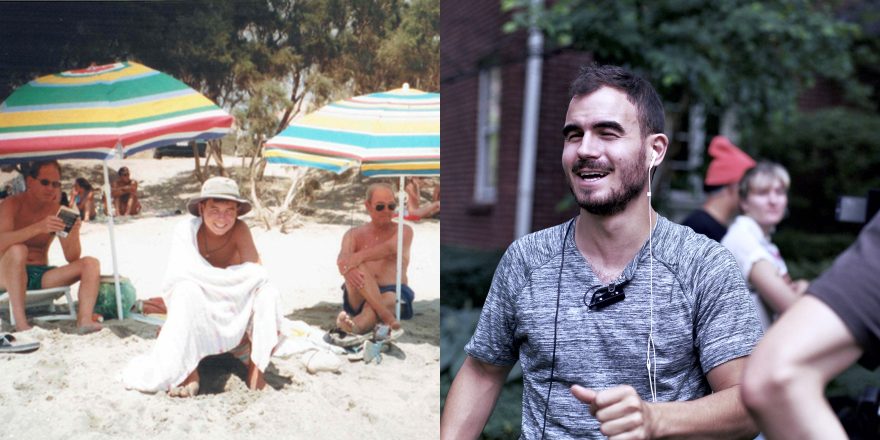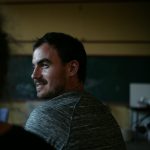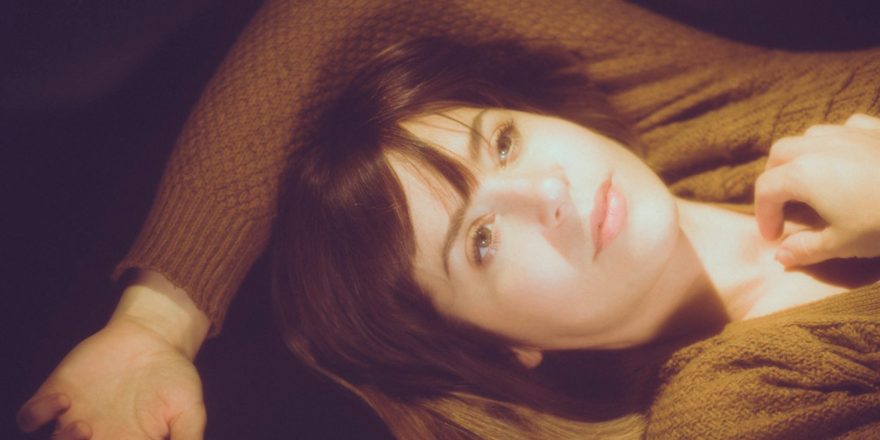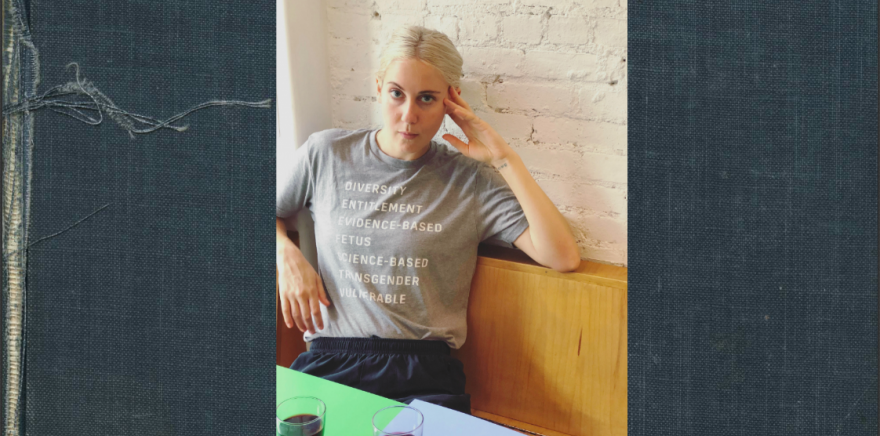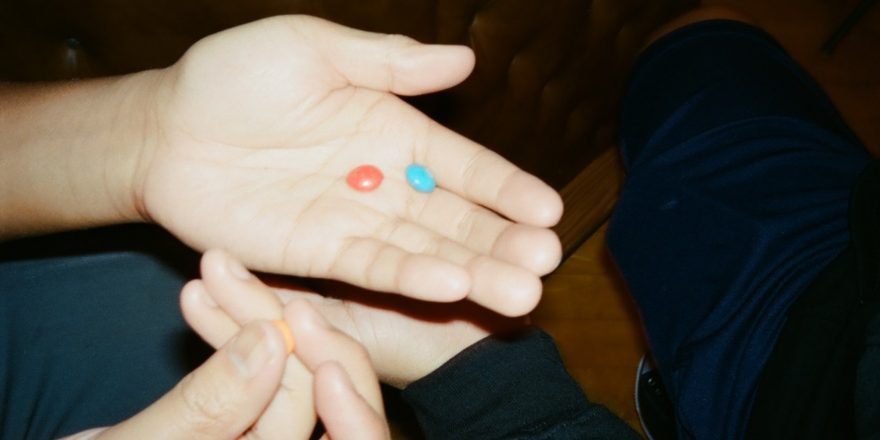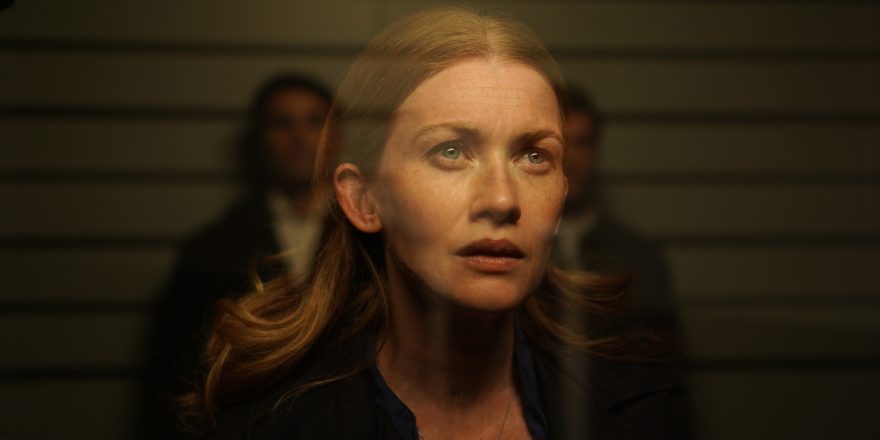During Saint Frances’ 22-day shoot, I didn’t lift weights or run or loop my feet under the couch and do sit-ups. I didn’t do yoga. I didn’t do pull-ups on door frames or burpees at lunch when no one was watching. I didn’t wake up at 4 a.m. to visit the gym or rush home after wrap. I ate craft services and catering and almost never picked off the cheese, scraped off the aioli, or left the bread in the aluminum serving tray.
Since sixth grade, I’ve had an eating disorder characterized by obsessive exercise and restrictive eating. I’ll leave it to an eating disorders specialist to give the textbook definition, but this is my narrative of it.
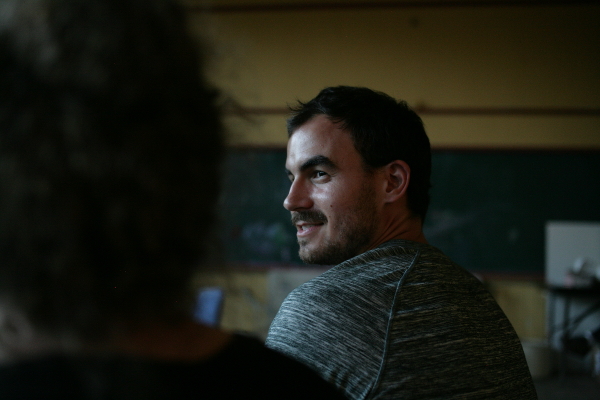
After eighteen years, I stepped on the set of Saint Frances expecting, in a summer shoot, the kind of production that would allow me to hide away my compulsions and restrict my diet cannily. What I found instead was a project I wanted badly to succeed, and a group of collaborators I didn’t want to let down. Something about it rendered unthinkable what had previously become normal. I would stay late to review the one-liner. I would arrive early to meet the homeowner. I didn’t have time to prioritize the habits I’d developed over the years. I didn’t forget my body, but I made an excuse out of the film, a wedge under the door of recovery.
In middle school, I noticed a strip of fat that ran around my waist; just wearing a belt every day for the first time made it obvious. It could’ve been there for months before I’d been assigned the khakis and polos (navy blue, white or orange) that characterized my school’s dress code. It came from nowhere and meant nothing, at first.
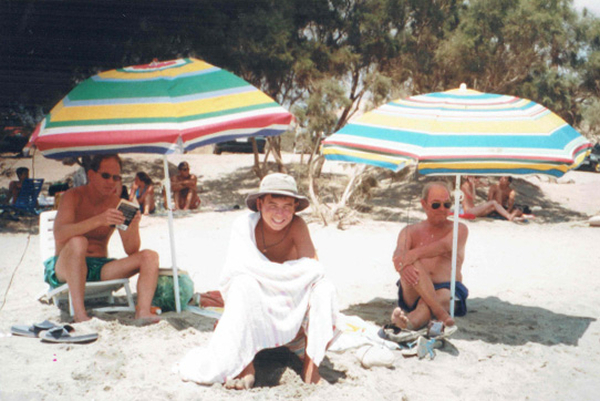
One day, Max P. approached me in our complex. Though he had topographical acne he had the look of a popular kid, and so was a popular kid. Tall. Gelled hair. No glasses. He pinched some fat on my arm and told me it was the reason I wouldn’t ever date our mutual crush. Actually his phrase was “get the girl.” I was the opposite of Sean – short, bespectacled from first grade, and insecure about this growing up thing already. So I believed him. But I didn’t understand what it was he’d tugged at. I knew, however, it had something to do with my body.
I went home that day and interrogated the squishy parts of my body. I wasn’t there yet, but the representations I saw of teenagers on screen made me hate even the idea of growing up. They were self-centered, vain, dismissive and rude, and they were lonely in their rebellions – A Goofy Movie was my Texas Chain Saw Massacre. To ask my parents for help would be to acknowledge a certain kind of “growing up” I wasn’t ready for.
So, alone, I did what I knew from elementary school gym class.
When all was quiet and I was certain I wouldn’t be disrupted, I slipped my feet under the bed frame and started with sit-ups. I don’t remember stopping. Then I would plank, often for nine minutes at a time, alternating with what I came to know as “Supermans” – arms and legs extended like the hero, lifting all but the belly off the ground. Every night this would go on for hours.
These late-night practices led me to long songs or audio excerpts I could burn onto CDs and Mini-Discs. Certain recordings of Abbott and Costello’s “Who’s on First?” exceed six minutes. Max Steiner’s “Suite” from Casablanca is seven. A 1938 Carnegie Hall recording of Benny Goodman and Gene Krupa’s “Sing, Sing, Sing” swings for more than 13. This was the soundtrack to a burgeoning disorder, gobbling up my brain.
If the listening habits of this middle-schooler sound like those of a 70-year old Greek immigrant, you would be right on the money, and nearer than ever to what this has to do with filmmaking.
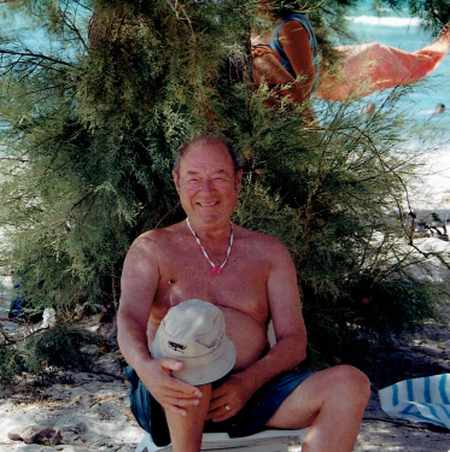
My Popou had a great, taut belly that stuck straight out. Some of my earliest memories are sitting on it or wrapped around it, sharing a ratty leather armchair with him watching movies.
Briefly: unlike mine, his body meant hugs and unabashed love. Some memories: he was diabetic and ate a version of healthy; most notably, his meals came like clockwork, and with each one came water for his orange-powdered medicine. My brother and sister played doctor with his body even when leukemia shrunk it. They called themselves Dr. Fungus Amongus and Nurse Amongus, inspecting the lint in his belly button and his corrugated toenails. They would also peel off his sunburnt skin. In Greece, on the island he was born, we frolicked on the beach together and ate messily, the way he would as a kid. He’d bury a watermelon in the morning and when we found it at midday, it had often shifted 10 or 20 feet down the beach, and was cold to the touch. He taught us to smash the pink rinds into our faces, savor the anarchy of the juice and meat running down our stomachs, the salt and sweet in our mouths as we leapt in the water to rinse off.
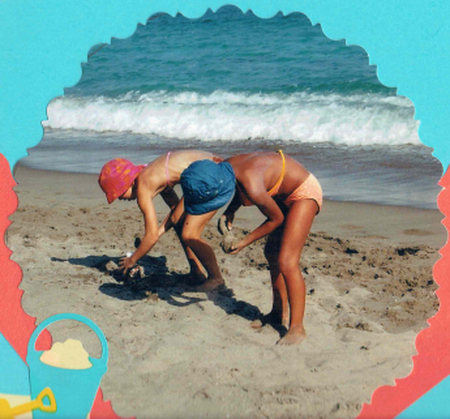
In San Francisco, where he lived, we’d walk the Outer Richmond to Poppa Opps and come back with six or seven videotapes, usually starring Humphrey Bogart or all the David Leans available (taped up in a set). Popou had his favorite movies recorded on VHS, as well, in towering drawers always at risk of falling over. A sea breeze still blows through the sliding sash windows in the living room where a bigger TV now sits. Papa Opps is now a UPS drop-off site and the armchair is long discarded.
At first, I envied and aspired to be like the heroes in those movies, with their quick consciences and razor wit. Years of sucking on toothpicks followed. After that passed, I began to wonder what it meant to “direct” movies. In this way, it was Popou who showed me the labors of those I wanted to be.
—-//—-
I surreptitiously read NEDA newsletters and subscribe to ED-specific motivational social media accounts. Sometimes I get bold and share them, like on National Ice Cream Day, but that one is easy to stand behind. I often found a handful of comments that express a certain envy at the diseases discussed, as if they were the most challenging, most effective diets: “I wish I had that.”
Briefly consider: I didn’t “skip” a day for eight years; after every meal, when my family would gather to play a game, I would already be lacing up my Asics for a three- to five-mile loop. On vacations, I would slip into cramped hotel bathrooms late at night, wrap my legs around the toilet, and rep sit-ups for hours, pausing with every creak and snore – in London, Athens, Amsterdam and Toyota City, Japan. At the beach, I wrapped my towel around me like armor. On class trips, I skipped the pool to take advantage of the empty hotel room, feet hooked beneath the headboard when there was no room on the floor, sweating into the sheets I would later sleep on. On the class trip to Key Largo, I remember turning on the TV to muffle my huffing and puffing. Hollow Man was playing on HBO. I marveled at Kevin Bacon’s narrow build.
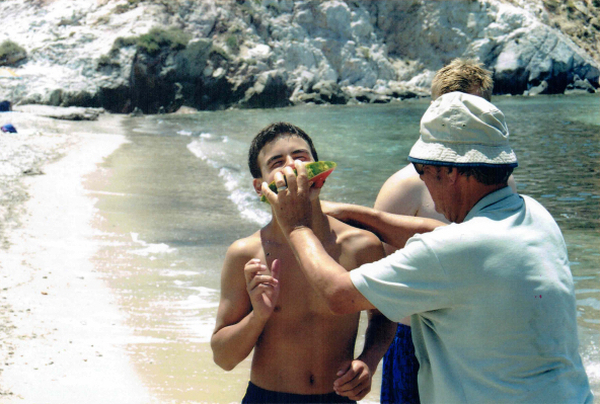
This behavior went unchecked through middle school (where I joined the track team to sanction my compulsions), into high school (where the possibility of sex exacerbated a fear of nakedness), and into college, where I began to meet real athletes who had molded my private habits into public spectacle. My diet changed from blanket-avoidance to protein-rich burgers and chicken breasts. I studied film abroad and would go for runs in sub-zero temperatures along the Vltava, so anxious was I not to lose any of the progress I’d made in the prior eight years. Despite that, I was so racked with body dysmorphia, I couldn’t gauge a change if there was one.
My first break came in college, when I realized that “off” days were a practice in weightlifting. A friend, Josh F., explained the physiology of muscle development. I recognized the physical damage I was doing by carving myself up. I still didn’t fully understand the mental toll.
It’s hard for me to communicate the enormity of the eight years that preceded this realization. College was the first time I realized something might be wrong with my behavior. The whole time, I thought I was cracking some code, that “working out” was something dumb jocks did. What I did was special.
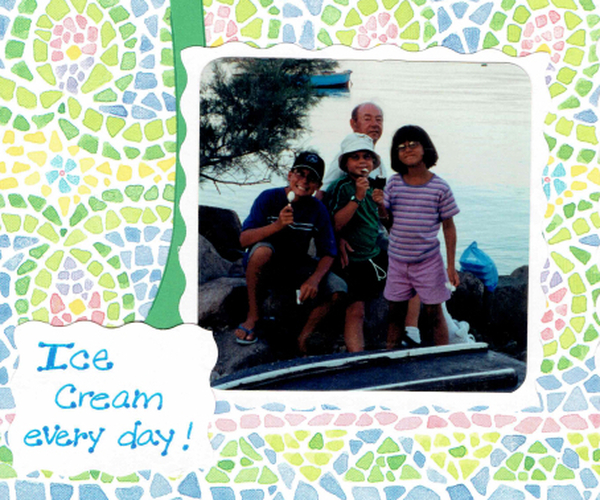
My mother, a dietitian and eating disorder specialist, raised us to be wary of restrictive behaviors around food. I didn’t associate my behavior with “control” or restriction until I began directing movies. Anyone who has ever been on a film set knows that food and exercise are entirely out of one’s control. It’s a disarming mix of structure and chaos – a hyper-consciousness of what’s at craft service, what’s for lunch, and how many days in a row we’d been given hummus, salad and bagel chips. But the shooting day itself requires a director (a good one, I think) to often cede control. Improvise. Find truth someplace unexpected. The discipline isn’t practiced to hold tighter but to open up and let go.
Often I can hear my disorder whispering on set, but the constancy of directing weathers it down. Each day on Saint Frances, the collaboration and letting-go I mustered as a director supplanted the control I sought over my body. I bought pastries for the crew and started splitting one with my D.P. each morning over the shotlist. The morning buns and croissants became an out, a good luck charm, and a blatant favoritism to feed the soul before the brain that screamed at me to imagine the buttery flakes congealing into tummy fat.
The day’s work wasn’t the distraction, it was the focus. I lost myself in the improvisation necessary to muscle through the callsheet. I stopped charting the call sheet in granola-bars-eaten. I tore the nutrition facts off the tub of peanuts. I got past the disorder on those days.
It turns out, the set was like a hothouse for my disordered thinking. The obsessions could grow quickly, short-tempered and impatient, refreshing the gym’s homepage for its closing time that day; consuming nothing but water; counting out boxes of raisins. Or it could lose oxygen, rear up and collapse under its own weight. When every take may be the take that lives forever, there isn’t much room for other thoughts.
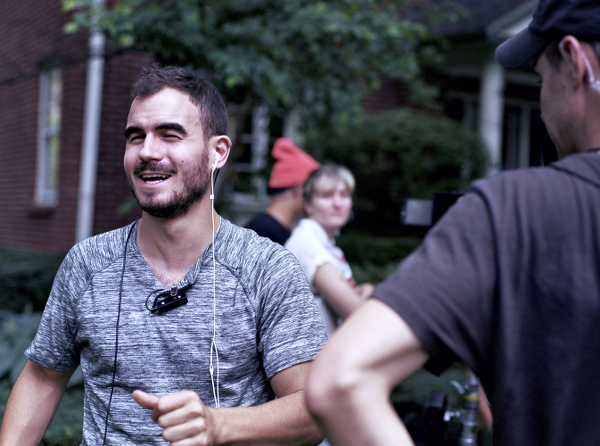
More than living with my disorder on set, I recognized the difference between the unhealthy discipline I’d created and the discipline needed to direct with empathy and compassion. Filmmaking hasn’t supplanted my disorder. I’ve still got to get a regular therapist. But it’s helped to take the place of my obsessions and made me a more patient and understanding person for it. More like the memories of my Popou.
Popou died when I was 14. I don’t know what he’d think of anything I’ve done. But I want to have a big, taut belly, too, someday. I want to be unafraid, like him, watermelon juices running into my belly button.
I don’t want those years back, but I want the forward spent full of joy and curiosity. I think that’d be the way to make him proudest.


